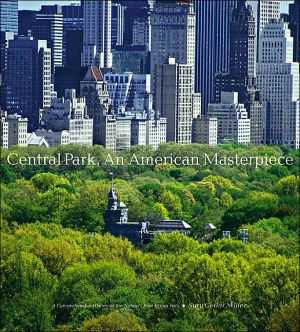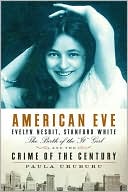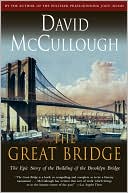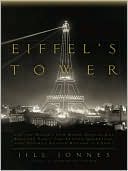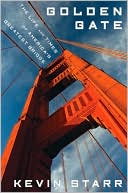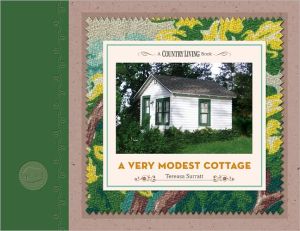Central Park: An American Masterpiece
Central Park, America's first public park, is a paragon of nineteenth-century landscape design and one of the world's great urban spaces. Marking the park's 150th anniversary, Central Park, An American Masterpiece is a definitive illustrated history that celebrates the splendor and significance of this national treasure. The park has just undergone a nearly three-hundred-million-dollar restoration that took more than two decades, and it has never looked more beautiful. Author Sara Cedar...
Search in google:
Every New York City tour bus stops at Strawberry Fields; countless movies have been filmed at Bethesda Terrace; and concerts from the Great Lawn are broadcast throughout the nation. These places are all part of Central Park, America's first public park and a paragon of 19th-century landscape design. Marking the park's 150th anniversary, this first definitive history celebrates the splendor and significance of this national treasure.Sara Cedar Miller, the official historian and photographer for the Central Park Conservancy, draws on extensive research to tell the captivating story of the park's creation, placing it in the context of 19th-century American art and social history and illuminating the roles of its designers Frederick Law Olmsted and Calvert Vaux and their associate Jacob Wrey Mould. Fascinating period views and original plans and drawings, many previously unpublished, are complemented by Miller's breathtaking new photographs, which reveal the restored park in all its glory. About the Author:Sara Cedar Miller has been the photographer for the Central Park Conservancy since 1984 and its official historian since 1989. Her photographs have been published in books and periodicals around the world. Miller lectures extensively on the history of Central Park and serves as a park spokesperson on radio and television. She received an M.A. in art history from Hunter College and an M.F.A. in photography from Pratt Institute. Miller lives in Park Slope, Brooklyn.The New YorkerIn 1863, at the peak of the Civil War, a package turned up on President Lincoln's desk containing stereoscopic images of the municipal wonder taking shape up in New York: Central Park. These high-tech photographic scenes were intended to soothe the President's nerves, just as the Park has calmed New Yorkers for generations. This summer is the hundred-and-fiftieth anniversary of the state's wise decision-influenced by the preëminent nineteenth-century landscape designer Andrew Jackson Downing-to set aside a giant chunk of swampy Manhattan ground for the creation of the first major landscaped public park in the United States. Central Park, An American Masterpiece, by Sara Cedar Miller, the Park's official historian, is itself a welcoming oasis, teeming with photographs of lush meadows, rustic pergolas, whimsical bridges, and Catskills-inspired ravines. The Park's eight hundred and forty-three acres, we learn, are easily discernible by shuttle astronauts; its sunken transverse roads were the prototype for the modern highway system; and its Great Lawn, originally a reservoir, was filled in with rubble from the Rockefeller Center construction site. The park we know today-featuring Balto the sled dog, Cleopatra's Needle, and Wollman Rink-descends from design entry No. 33, the famous "Greensward" plan of architects Frederick Law Olmsted and Calvert Vaux. The University of Massachusetts Press has reprinted Walks and Talks of An American Farmer in England, Olmsted's engaging account of his 1850 ramble around England and Wales, including his fateful encounter with Birkenhead Park, near Liverpool. "This magnificent pleasure-ground," Olmsted wrote, "is entirely, unreservedly, and for ever the people's own.( Mark Rozzo)
Preface7Introduction: An American Masterpiece8Ch. 1An Under- and Overview14Ch. 2The Heart of the Park36Ch. 3Kindred Spirits70Ch. 4The Landscapes98Ch. 5The Architecture156Ch. 6The Sculpture188Epilogue: The Birth of the Park Movement and City Planning in America236Map240Endnotes242Bibliography248Central Park Conservancy249Acknowledgments250Index252
\ The New York TimesMiller's history is as clear and sprightly as Huddlestone Cascade (uptown, near Lasker Rink), at 15 feet the highest waterfall in the park. — Eric P. Nash\ \ \ \ \ The New YorkerIn 1863, at the peak of the Civil War, a package turned up on President Lincoln's desk containing stereoscopic images of the municipal wonder taking shape up in New York: Central Park. These high-tech photographic scenes were intended to soothe the President's nerves, just as the Park has calmed New Yorkers for generations. This summer is the hundred-and-fiftieth anniversary of the state's wise decision-influenced by the preëminent nineteenth-century landscape designer Andrew Jackson Downing-to set aside a giant chunk of swampy Manhattan ground for the creation of the first major landscaped public park in the United States. Central Park, An American Masterpiece, by Sara Cedar Miller, the Park's official historian, is itself a welcoming oasis, teeming with photographs of lush meadows, rustic pergolas, whimsical bridges, and Catskills-inspired ravines. The Park's eight hundred and forty-three acres, we learn, are easily discernible by shuttle astronauts; its sunken transverse roads were the prototype for the modern highway system; and its Great Lawn, originally a reservoir, was filled in with rubble from the Rockefeller Center construction site. The park we know today-featuring Balto the sled dog, Cleopatra's Needle, and Wollman Rink-descends from design entry No. 33, the famous "Greensward" plan of architects Frederick Law Olmsted and Calvert Vaux. The University of Massachusetts Press has reprinted Walks and Talks of An American Farmer in England, Olmsted's engaging account of his 1850 ramble around England and Wales, including his fateful encounter with Birkenhead Park, near Liverpool. "This magnificent pleasure-ground," Olmsted wrote, "is entirely, unreservedly, and for ever the people's own.\ \ ( Mark Rozzo)\ \ \ Publishers WeeklyMiller is the park's official historian and photographer, and her authority shows, revealing some new facets to this most overexposed of urban spaces. Original plans and drawings (many published for the first time) sit alongside modern-day photographs among the more than 200 color illustrations, creating a sense of the history that underlies this man-made urban landscape. Frederick Law Olmsted, one of the park's designers (the other was Calvert Vaux), saw his plan as a balm to soothe the roiling city's ills. Miller finds him remarking that the park "exercises a distinctly harmonizing and refining influence upon the most lawless classes of the city-an influence favorable to courtesy, self-control, and temperance." Bethesda Terrace was Vaux's ideological baby and, according to Miller, was influenced by the work of John Ruskin, Alexander von Humboldt and Thomas Cole. Kenneth T. Jackson, president of the New-York Historical Society, writes in his preface that Central Park is not the oldest public open space in either the world or the United States, nor is it the largest, nor even the most beautiful, yet it has the most contrast to its surroundings, an expression of a city's life and exuberance, and is properly celebrated as such by Miller. (May) Copyright 2003 Reed Business Information.\ \ \ \ \ Library JournalIn celebration of the 150th anniversary of Central Park, this elegant volume is a fitting tribute to the first American public park and what may be the most beautiful park in the world. Miller, photographer and historian of the Central Park Conservancy, handles the myriad facets of this green oasis with a sure hand and an artist's eye. Archival materials and current research inform the work, which deals with the image of the park as a 19th-century artwork, a landscape painting, a sculptural monument, and a gardener's delight. The reader is guided through the park from the entry gates to the Bethesda Terrace, from the meadows to the wilderness of the Ramble. Around every corner is a wonder of texture and color, subtlety and flamboyance, exuberance and restraint. The major sculptures and detailed carvings are revealed along with the small architectural jewels of follies and bridges. This is a work for New Yorker and tourist, historian and artist, bird watcher and gardener. Highly recommended for any and all libraries-and for personal bookshelves as well.-Paula Frosch, Metropolitan Museum of Art Lib., New York Copyright 2003 Reed Business Information.\ \
